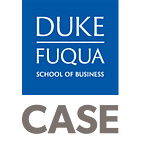Reduce Your Costs
Entrepreneurs continually reduce ongoing costs in many ways, including making improvements to the model that decrease operating costs, leveraging opportunities for economies of scale, or increasing the efficiency of required inputs (e.g., materials, human resources, and other supply resources).
Another option is to change the “build vs. buy” frame, making strategic decisions about which pieces of the solution the organization needs to operate directly (“build” internal to the organization’s operations) versus outsourcing to other organizations (“buy”). Buying could be in the form of having another organization (e.g., another social enterprise, a government partner, etc.) implement a piece of the model or better aligning with other organizations that can deliver complementary pieces of an overall value chain and hand-off to the primary organization, or vice versa.
Lesson 1: Seek opportunities for cost-efficiency
One Acre Fund on piloting efficiencies and using technology for cost savings. One Acre Fund (1AF) counts cost-efficiency as one of its “absolute priorities,” and a philosophy that is embedded throughout the organization. One concrete example is 1AF’s focus on testing and rolling out innovations to make its field program more efficient and scalable. 1AF has a rigorous multi-phased pilot process that moves from desk research to small scale pilot (100- 200 farmers to test feasibility, impact, and cost) to scale up trial (1,000–3,000 farmers to further test adoptability) and, finally, to roll out to the core program. This process has led to many successful cost efficiency improvements, including a commonly leveraged cost efficiency driver: technology. Starting in Kenya in 2014, 1AF shifted from a traditional, cash-based repayment model to repayments processed through mobile money service M-Pesa. This shift has resulted in an 85% reduction in payment leakages and an 80% reduction in repayment collection costs for 1AF. It has also resulted in 46% savings in field officer time spent on collections — meaning time freed to work with additional farmers or deepen impact with existing ones. (To learn more about One Acre Fund’s approach to scaling, read their scaling snapshot.)
Examples like 1AF, or like the cost efficiency decisions that an organization like Evidence Action made in East Africa, help to drive down costs and create a foundation that eventually could achieve economies of scale as it grows.
Lesson 2: Consider buying vs. building
VisionSpring scaling through an implementation partner. Rather than build its own costly salesforce in-house, VisionSpring recently celebrated selling its 1 millionth pair of low-cost eyeglasses through partner BRAC’s network of community health workers. In 2016 alone, BRAC’s community health workers conducted 1.2 million vision screenings and reached 61 of 64 districts in Bangladesh, while VisionSpring was able to focus on providing complementary services (supply chain and sourcing, product forecasting, marketing and demand generation, strategy, and a revolving facility). By pursuing a “buy” strategy, VisionSpring was able to keep implementation costs low and focus its revenue on more rapid scale of impact. (To learn more about VisionSpring’s scaling approach, read the full case study.)
Advice from the Field on Reducing Costs
If you’re just considering…
- Even small tweaks can add up to large savings over time, but the process of testing tweaks takes time and resources. Have systems in place to set criteria for what you test and at what level of effort.
If you’re getting started…
- Always keep impact at the fore and ensure that your cost efficiencies do not have a reducing effect on quality.
- Map your ecosystem to identify other actors in your value chain whose work you might be able to leverage.
- Pay attention to the scaling limits of your value chain partners. Can they scale as fast as you can?
If you’re digging deeper…
- Create a performance-based culture and processes that incentivize cost efficiency (e.g., embed discussions within performance reviews, staff meetings, and post-action reviews of programs or events).
- Leverage technology, when appropriate, to drive cost efficiency.
- Consider implementing through other partners, but be careful about program fidelity; if something needs to be implemented, can you document and train effectively to outsource or does it need to stay more firmly under your control?
Read next: Earn Some of Your Income, Set the Course: Rules of the road for financing scale, or return to see all articles in Money Matters.
This article was written by Catherine Clark, Erin Worsham, Kimberly Langsam, and Ellen Martin and released in March 2018.
